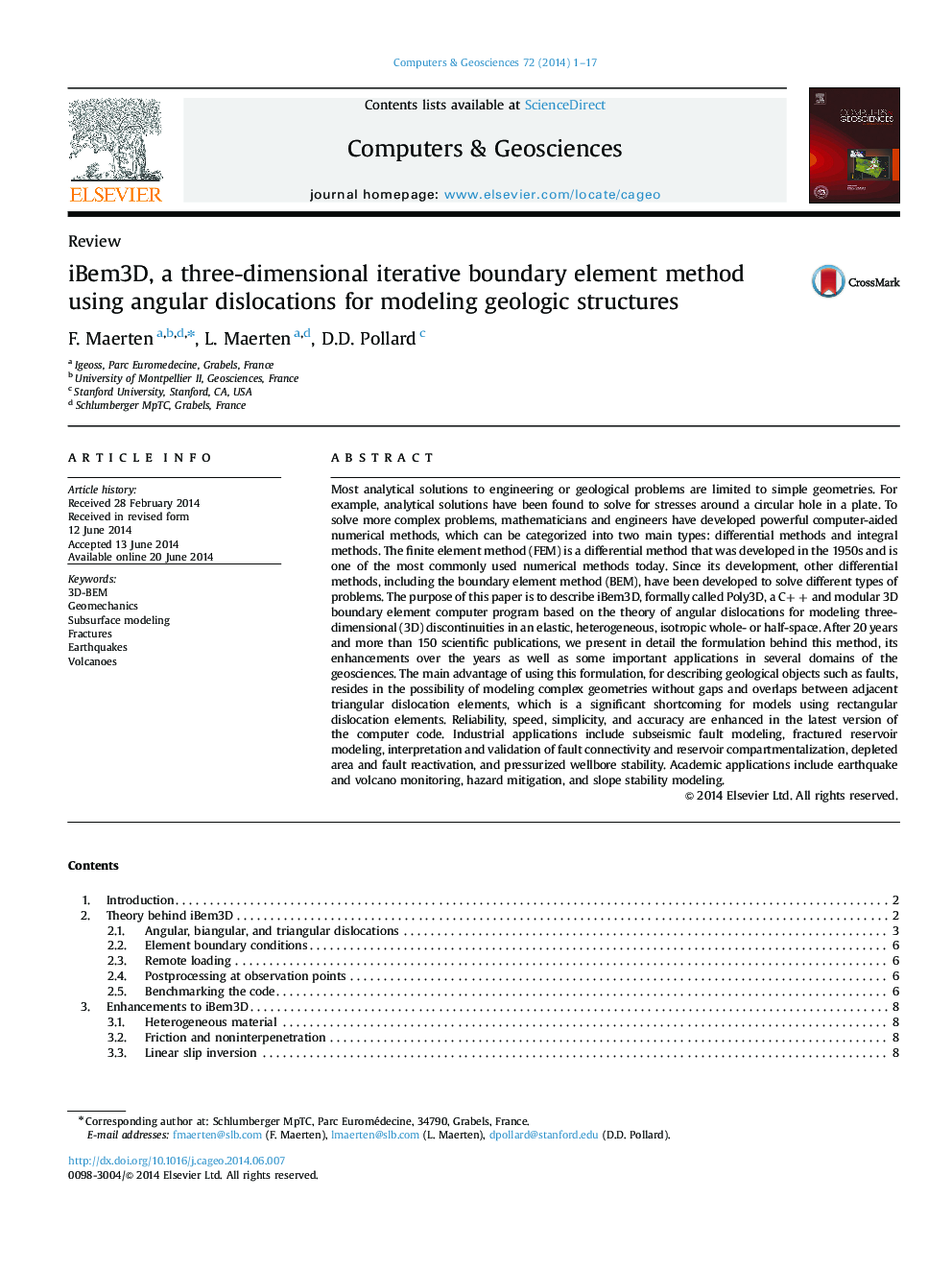| کد مقاله | کد نشریه | سال انتشار | مقاله انگلیسی | نسخه تمام متن |
|---|---|---|---|---|
| 507341 | 865116 | 2014 | 17 صفحه PDF | دانلود رایگان |

• Modeling of perturbed stress field around complex 3D frictional discontinuities.
• Extension to slip inversion using complex fault geometry.
• Determination of paleostress using any type of data.
• Application to fracture mechanics, earthquakes, volcanos and risk assessment.
Most analytical solutions to engineering or geological problems are limited to simple geometries. For example, analytical solutions have been found to solve for stresses around a circular hole in a plate. To solve more complex problems, mathematicians and engineers have developed powerful computer-aided numerical methods, which can be categorized into two main types: differential methods and integral methods. The finite element method (FEM) is a differential method that was developed in the 1950s and is one of the most commonly used numerical methods today. Since its development, other differential methods, including the boundary element method (BEM), have been developed to solve different types of problems. The purpose of this paper is to describe iBem3D, formally called Poly3D, a C++ and modular 3D boundary element computer program based on the theory of angular dislocations for modeling three-dimensional (3D) discontinuities in an elastic, heterogeneous, isotropic whole- or half-space. After 20 years and more than 150 scientific publications, we present in detail the formulation behind this method, its enhancements over the years as well as some important applications in several domains of the geosciences. The main advantage of using this formulation, for describing geological objects such as faults, resides in the possibility of modeling complex geometries without gaps and overlaps between adjacent triangular dislocation elements, which is a significant shortcoming for models using rectangular dislocation elements. Reliability, speed, simplicity, and accuracy are enhanced in the latest version of the computer code. Industrial applications include subseismic fault modeling, fractured reservoir modeling, interpretation and validation of fault connectivity and reservoir compartmentalization, depleted area and fault reactivation, and pressurized wellbore stability. Academic applications include earthquake and volcano monitoring, hazard mitigation, and slope stability modeling.
Journal: Computers & Geosciences - Volume 72, November 2014, Pages 1–17